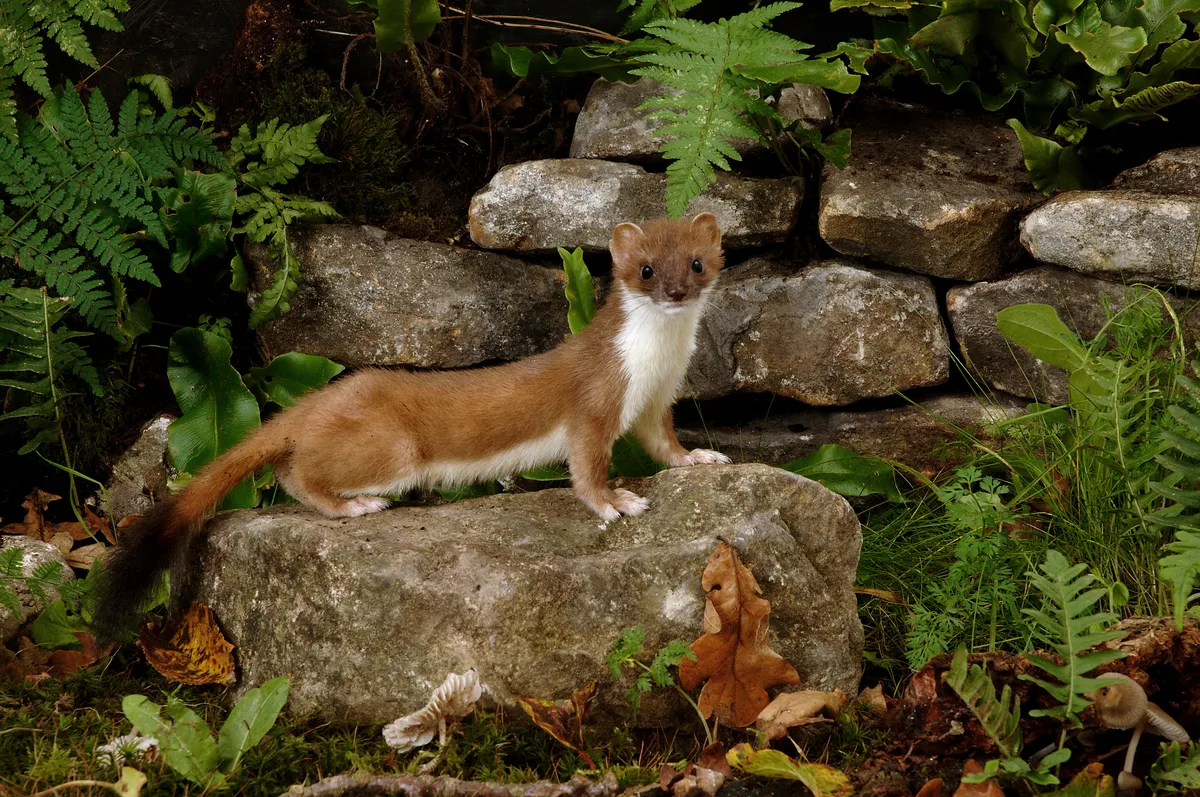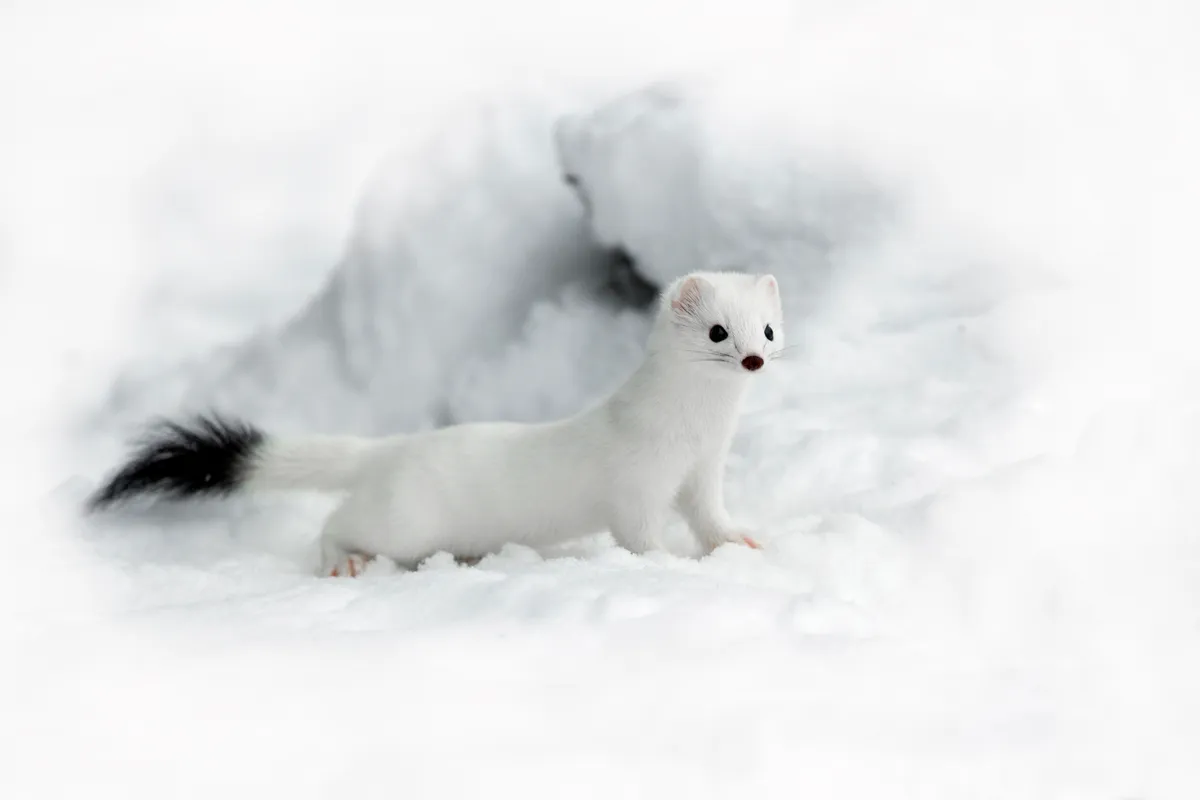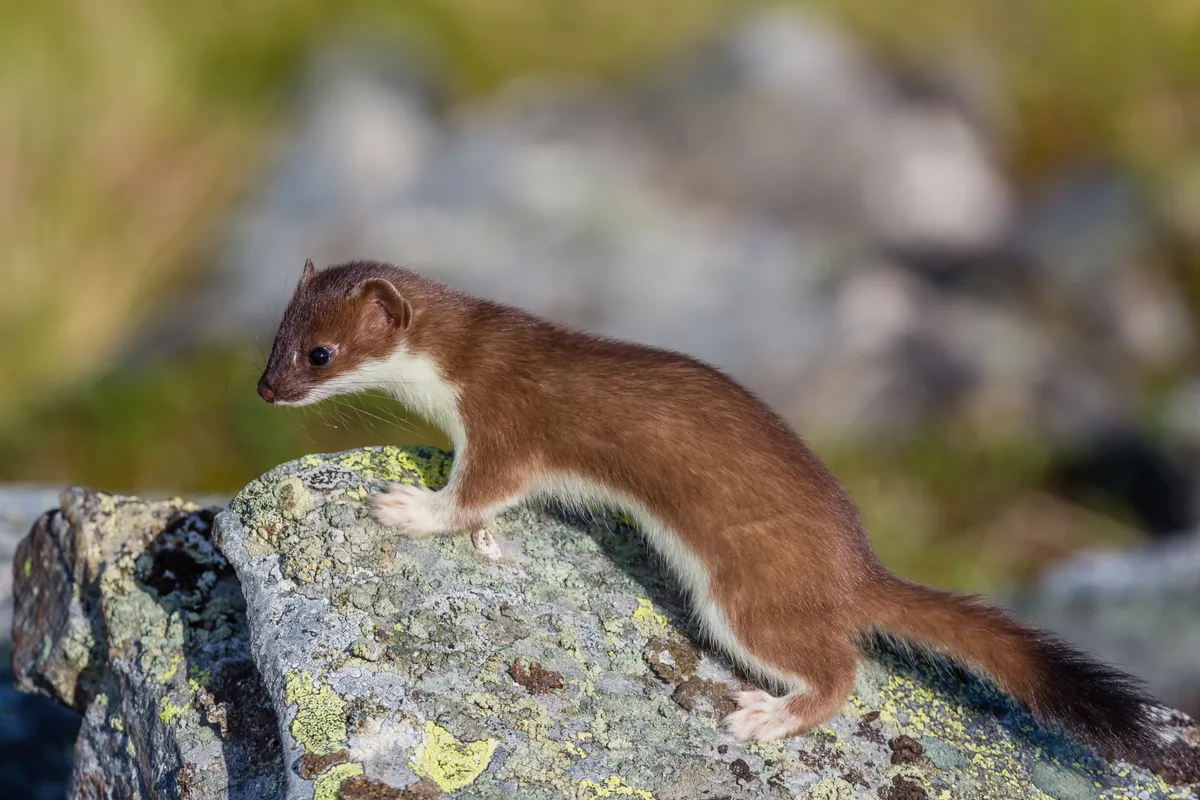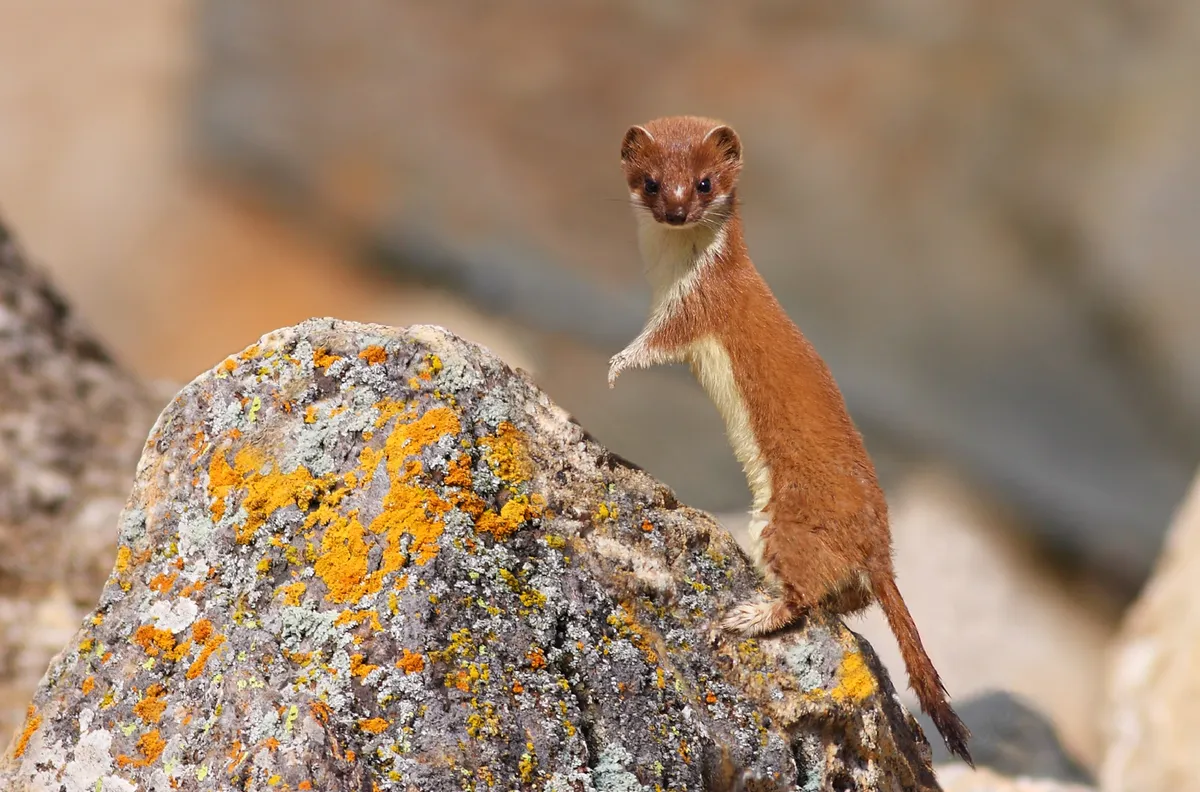Stoats and weasels aren't unusual in the British countryside, but you don't get to see them very often. And when you do, it's often not much more than a quick flash as they streak through the grass in front of you. The differences between stoats and weasels aren't huge, but when you know what to look out for, it's not too hard to know whether you're watching a stoat or a weasel.
Here is our expert guide to stoats and weasels, including how to identify, habitat, diet and the best places to spot in the UK.
What is a mustelid?
Stoats and weasels are mustelids which are a family of carnivorous mammals. In the UK, there are seven mustelid species found in the wild, including stoat, weasel, badger, pine marten, American mink, polecat and otter. Each species varies widely in looks and behaviour, but generally speaking mustelids are long-bodied, short-legged, thickly furred and tend to be active at night, which makes them elusive. Stoats and weasels are two of the most similar mustelid species and can be tricky to identify when you only catch a brief glimpse.
FACTFILE: STOAT
- Scientific name Mustela erminea
- Body Long and lithe; roughly the size of a thin rat
- Size Up to 25cm long (head and body); male is noticeably larger than female
- Flanks Uniformly brown; form a straight, contrasting line with pale belly
- Throat No brown patches
- Tail Medium length; rearmost third always black
- Underside Creamy white
- Habitat Open countryside and drystone walls throughout Britain and Ireland

Where to see stoats
The stoat is a long thin shape which enables them to pursue prey above and below ground, but your best chance of seeing one is in rough grassland, around rabbit warrens or near wood piles.
Stoats often hunts in daylight, sometimes stalking prey in the open and nesting in old burrows.
When is the best time of year to look for stoats?
After the vegetation dies back in November is a good time to look out for stoats in the UK.

Does stoats coat turn white in winter?
Yes. White forms are common in northern Britain, but rare in the south. The tail tip stays black and they moult into their winter coats in winter, so in northern areas many will already be white, making them conspicuous in snow-free areas.
What do stoat droppings look like?
Scats are long and slender, measuring up to 8cm long.
How to identify animal droppings
Droppings or scats can tell us a lot about which animals have been visiting our gardens, parks and countryside, including hedgehogs, foxes and badgers. Our expert guide to animal droppings or scats explains how to identify which animal species it comes from and what information it contains about the health of the animal.
What do stoats eat?
Stoats are fierce predators and eat 25 per cent of their body weight a day, so they spend a lot of time hunting. Stoats eat mainly rabbits; as a result, stoat numbers decline when rabbits are scarce.
How do stoats hunt?
Stoats hunt small mammals opportunistically, moving rapidly and investigating all possible hiding places, says Steve Harris. Speed enables them to take prey by surprise (and makes it hard for bigger predators and birds of prey to catch them).
The senses of smell and hearing are most important when hunting in dense cover. Once located, their victims are generally caught in a couple of bounds; stoats may wrap their bodies around large mice or small rats to subdue them.
Despite being much larger than stoats, rabbits are hunted, too. The average rabbit is several times the weight of a stoat and dangerous to tackle. Stoats approach rabbits cautiously, stopping and standing up on their hind legs to judge distances.
They use cover to get close and judge their final dash carefully to ensure that they maximise the surprise to the rabbit and minimise the chance of injury to themselves.
Once they have made a kill, stoats quickly drag larger prey into cover to avoid attracting the attention of other predators. The remains of the carcass will be cached for future use, either under dense vegetation or loosely buried under a log or rock.
FACTFILE: WEASEL
- Scientific name Mustela nivalis
- Body Ultra-slim; about twice the size of a house mouse
- Size Up to 20cm long (head and body); more slender than a stoat. Sexes are similar in size
- Flanks Dividing line between tawny brown back and pale belly patchy and irregular
- Throat Brown patch or ‘gular spot’ on each side
- Tail Entirely brown; very short and often hard to see
- Underside Pure white
- Habitat Hedgerows, woods and rough grassy banks; absent from Ireland

Where to see weasels
Wooded areas with plenty of cover and along overgrown hedges and banks. Nests in empty mouse holes.
Does weasel fur turn white in winter?
A weasel's coat doesn't change colour in Britain, as it remains a rich, tawny brown all year. In Europe, some do turn white.
How to identify weasel droppings
Scats similar in shape to stoat’s but smaller – up to 5cm long.
How to identify animal holes
In winter the vegetation dies back, making it easier to spot mammal holes and burrows. But do you know which holes belong to which animal? Learn how to identify animal habitats with our guide to the common animal holes and burrows found in the British wintertime.
What do weasels eat?
Weasels eat mainly voles and mice, some of which may be caught in their burrows.

How to tell the difference between a stoat and a weasel
- If it's got any white on its back, it's a stoat, as weasels don't turn white in winter in the UK
- Stoats have a longer tail with a black tip all year round - this is the key distinguishing feature
- Stoats are bigger than weasels, but that can often be hard to tell in the field
- Stoats are bouncier than weasels when they're running; a running weasel tends to be quicker and lower to the ground

And of course, based on all the known evidence, if you see a small predator riding a woodpecker, it's probably going to be a weasel...
What’s the world’s smallest carnivore?
Britain’s tiniest meat-eater is also the world’s smallest carnivore. An adult least weasel (simply called the ‘weasel’ in the UK, or Mustela nivalis scientifically) grows no longer than 26cm, and the smallest can weigh as little as 25g – just 0.0025 per cent of the heft of the largest creatures in the order Carnivora, polar and Kodiak bears, weighing up to 1,000kg.
Its stature is the reason why it’s such an efficient predator – with a large surface-area-to-weight ratio, it must eat a third of its own weight daily, entering the burrows of rodents and rabbits to take prey several times larger than itself with a fatal bite to the neck.

Widespread on mainland Britain, the species is also found in Europe, North America, Asia and North Africa, and has been introduced elsewhere.
Test your mustelid ID skills with our quiz:
Main image: Stoat (Mustela erminea). © Mark Hamblin/Getty